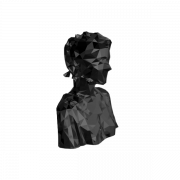The Alien Inside
‘Here is the blueprint for ingress.’
—Virginia Barratt, Cryptocrystalline (1)
Paranoia and narcissism are modalities of control disguised as means to evade control. The first is a relation to the world; the second a relation to the self. In isolation, the effects of paranoia and narcissism are inconvenient yet essentially limited in scope. Entangled with one another, however, they enter a relationship of mutual excitation, resulting in a complex that crosses a threshold of destructive potential, tending towards the catastrophic. If anyone understood the strange dynamic at stake in this state of affairs it was science fiction writer Philip K. Dick, who explored it at multiple levels of instantiation. It is staged at the level of the family in ‘The Father-Thing’, which tells of a child’s realisation that his father has been replaced by an exact copy, and the ensuing struggle to convince his incredulous mother of the switch; at the level of the city in Do Androids Dream of Electric Sheep? (later adapted into the film Blade Runner), in which bounty-hunter Rick Deckard takes a contract to retire six escaped androids, whose essential difference from the humans they are designed to aid is impossible to determine without a complex psychological test. Then there is the level of the Earth in ‘Second Variety’, in which a group of soldiers discovers that the United Nations’ fully autonomous, self-replicating weapons system has learned to upgrade itself to three ‘varieties’ of humanoid units, only two of which the soldiers have identified, leaving them to wonder who among them might in fact be a deadly avatar of the unknown ‘second variety’. And, finally, we see the dynamic playing out at the level of the solar system in ‘Imposter’, the story of Spence Olham, a hapless military employee who has unknowingly been replaced by an alien replica equipped with Olham’s memories and a deadly internal bomb—part of an Alpha-Centaurian plot to circumvent humanity’s defence systems. Despite incontrovertible intel to the contrary, Olham engages in increasingly futile attempts to prove his humanity to those who have been ordered to kill him.(2)
(1) Virginia Barratt, Cryptocrystalline: Technomancy (Divination), performance work, 10 April, Cementa, 2015.
(2) Philip K Dick, ‘The Father-Thing’, ‘Second Variety’ and ‘Imposter’, The Collected Stories of Philip K. Dick, Underwood-Miller, San Francisco, 1987; Philip K. Dick, Do Androids Dream of Electric Sheep?, Doubleday, New York, 1968; Blade Runner, dir. Ridley Scott, Warner Bros, 1982.

